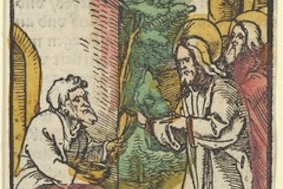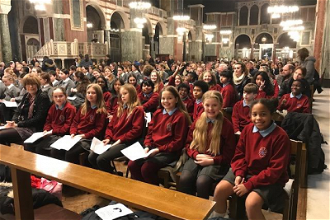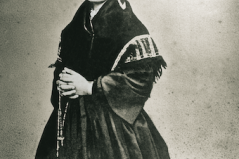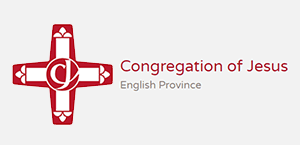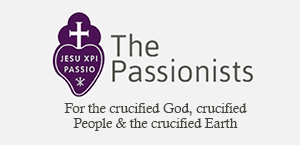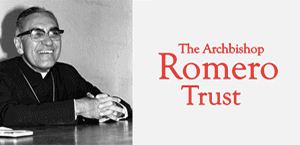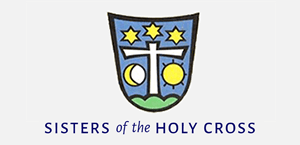Fr Toby Lees homily during Relics of St Bernadette visit to St Mary's
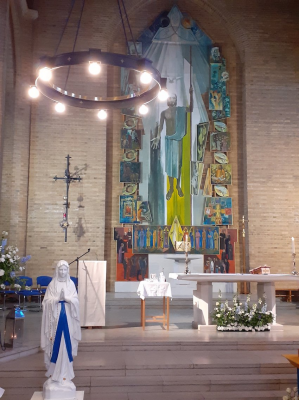
Image: St Mary's Chaplaincy Twitter
Fr Toby Lees OP gave the following homily on Tuesday, during Mass for the visit of the Relics of St Bernadette to St Mary's University, Twickenham.
My first encounter with the seemingly weird world of Catholics and our veneration of relics was the visit of the relics of St Therese of Lisieux, another great French woman to visit these shores . . . now there's a phrase I probably wouldn't have ever used if I weren't Catholic . . . but being Catholic has opened my eyes to goodness in places I might not have otherwise looked, in the lowly and even the French, and to the horror of my English partisan pride, I have found so much that is good in France! Not least these two inspiring ladies, Therese and Bernadette.
I only went to visit the relics of St Therese in Westminster Cathedral back in 2009 because a friend wanted to go and was quite insistent, little did I know that I would find myself going back the next night of my own volition and be profoundly moved once more.
Anyway, as we got to the Cathedral in the evening, there was a pretty big queue - this was not great - but there was also a kebab van parked up in the Piazza, so the evening definitely wasn't going to be a total disaster. This was Catholicism, to my mind, taking care of body and soul, though not nourishing the body in a way that my mother would approve of!
Anyway, much to my surprise, I found myself somewhat in awe as I approached the reliquary and I prayed for a particular grace which although I had no way of knowing it immediately at the time, was granted to me.
Now was the grace granted by the relics, was the healing a result of having touched the casket?
Well, no, the relics themselves contain no special powers, but they are an affirmation of the goodness of the body, and they are an affirmation of that desire that all who have loved and lost know, the desire to hold on to something of the person, whilst at the same time having to let go.
St Bernadette is no longer bodily with us, and yet she is not lost to us, we are still in relation with her through prayer, and her earthly remains are not empty of meaning because her body was a vessel of holiness.
It might seem somewhat strange that a Church that preaches about eternal realities, about there being more to life than mere matter and the span of our universe, that a Church which emphasizes that we have an immaterial soul, should be the great defender of the body in our time. Yet, in age which objectifies the body, which idolizes the body, which mutilates it, which scorns it, which concentrates all meaning upon the body, which views it as a prison and something to be overcome . . . in the face of all these objectifications, the Church insists that the body can be holy, that the body is the sacrament of the human person, the visible manifestation of the human person made beautiful in the image and likeness of God, the human person called to be a partaker in the divine nature that itself became embodied in the Person of Jesus.
The body is not incidental to being human, it is not an obstacle to being human, the body is a gift, and the way by which we give; the body is what makes us distinctively human, the only creatures with an immaterial soul and a bodily existence. The body is something received, given to me, not something to be created and fashioned by me.
It seems to me, then, that the cult of relics is a healthy intuition of this goodness of the body, and it also seems happy providence . . . or very astute thinking from Fr Peter . . . not that the two are incompatible . . . to have the relics of St Bernadette in this chapel with a Dominican preacher, because the brickwork of this chapel was inspired by the medieval cathedral of Albi, that city in the region where St Dominic, and his band of brothers, first began to preach the goodness of all creation, not just the spiritual, against those Albigensians and Cathars who would argue that the material world was created by an evil lesser God . . . that Cathedral in Albi is a mighty sign of the Church, purportedly the largest brick building in the world, and it is good and it is beautiful.
Yet, when we come before the relics of St Bernadette and pray for her intercession, when we ask this little one who lived in such intimacy with Mary, to intercede for us, we see something better and more beautiful, we see those words of Magnificat, 'He looks on his servant in her lowliness, henceforth all generations will call me blessed', we see those words made manifest once more in the life of a small, weak, frail, sickly girl from an unrenowned town in the shadow of the Pyrenees. We see that it is not brute strength alone which gives the body goodness, not that strength is bad, but we see that it is the heart that matters more and gives the body its fulness of meaning.
In Bernadette, we see someone, for whom, at so many points in her life, it would been easier to give up. There were so many things which came at such great difficulty and cost to her, and yet perhaps the frailty and destitution that would cause so many to look down or to ignore her, without romanticizing them, were a part of the formation of her saintly strength.
As we laud the example of St Bernadette, as we give thanks to God for the great things he has worked in the lowly, we invert the values of so much of our modern world, in the same way as is so powerfully enacted in Lourdes to this day. It seems to me that something of the Kingdom of Heaven is already made more manifest there, with the sick and the frail, not hidden away, but put at the forefront and loved.
The first time I went to Lourdes and saw this I was moved to tears at the sight of the evening procession and all those thousands in wheelchairs. The suffering of the world not hidden away, which might make us more comfortable, but does nothing for the suffering.
I also remember a subsequent occasion when as one of about 100 Dominicans I was in the procession with the Blessed Sacrament, as I walked along with so many of my brothers and sisters, so many people smiled. Now, they didn't know me or those around me from Adam, and yet they smiled - and the Blessed Sacrament was still a long way behind out of sight, so it wasn't just my ego - the smiles were for me, and for those around me, and they were from strangers who did not know us, and yet I think back to that day a lot. Those smiles have meant a lot.
Those who smiled saw something good in what the habit we wore represents, they saw perhaps not what we were but what we could be, and those smiles remain an inspiration to me to try and live up to what they saw and they deserve.
And it also struck me, that Bernadette spoke so much of Our Lady's smile, in fact, this was her first and most striking impression of the Lady who appeared.
There's a beautiful story I read about the smile of both Our Lady and of Bernadette in Adam Simon's book Bernadette of Lourdes:
In July 1958, le Comte de Bruissard was staying nearby and had the opportunity to meet Bernadette.
'How did she smile, the Lady?' I asked.
The little shepherdess looked at me with astonishment, then, after a moment of silence she said, 'Sir you would have to be in heaven to recreate that smile.'
I said, 'Could you not do it for me? I am a doubter and I don't believe in the apparitions.'
The face of the child grew dark and took on a severe expression. 'So, sir, do you think I am a liar?'
I was disarmed. No, Bernadette was not a liar, and I was about to go on my knees to beg forgiveness.
The she added, 'Since you are a sinner, I am going to recreate the smile of the Virgin'
Since then I have lost my wife and two daughters, but I do not feel alone in the world. I live with the smile of the Virgin.
When we smile, we recognize the goodness of something or someone, and you cannot smile without a body.
It's a cliché, but it's true, that we live in a very fractured angry world, I think we live in a world where a lot of people do bad things not just out of desperation, not out of malice, but because they don't really respect themselves, don't really value themselves. I wonder whether our prison chaplains might recognize some of this, those who have little self-esteem, having to act hard to try and acquire it and to gain respect, doing violence to themselves and others in the process.
Perhaps it might sound trite, but St Bernadette, smiled the smile of the Virgin and it changed a life. When we smile at someone who so often sees anger, or is told they must change now, or be like this or like that, perhaps they might be given a little push along the path of recognition of the truth that another visitor to this chapel, Pope Benedict, spoke, when he said, 'You are not some casual and meaningless product of evolution. Each of us is the result of a thought of God. Each of us is willed, each of us is loved, each of us is necessary.'
There's a double grace to ask St Bernadette for this evening: the smile born out of the recognition and the recognition born out of the smile.
LINKS
Read more about the tour of the Relics: www.indcatholicnews.com/news/45207
For the full itinerary see: www.indcatholicnews.com/news/45315



